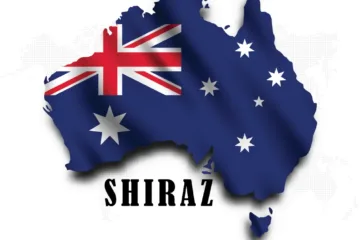
It is generally accepted that global wine demand is affected by changes in the habits and preferences of wine drinkers. This article aims at giving more details about these social factors that can increase wine demand both locally and globally.
You can click here to access the article examining the social factors that have the capacity to decrease demand in the wine market.
Countries where wine is becoming mainstream thanks to a developping food and “Art de Vivre” culture
Global and local impacts of Movies and TV Shows
The best example of a country where wine has recently become mainstream in terms of social consumption is the USA. Indeed, this country was dominated by a fast-food culture and has recently developed a true market linked to “haute gastronomie” and food culture. This is partly due to the success of many movies (Ratatouille…) and TV Shows that democratized the culture of Chef cooking and high-end restaurants. As such, the USA is currently in the process of catching up with countries like France, where haute cuisine is known to all. As a result, the wine market is developing in tandem with haute cuisine because it is THE drink whose DNA is best suited to highlighting the most elaborate dishes. Indeed, wine allows the greatest Chefs to showcase their culinary prowess.
Furthermore, the Wine Culture in the USA has been greatly favored recently by the global success of the Netflix movie ‘Uncorked’ (‘Le Goût du Vin’ in French). In this original production, the main character Elijah, who works both at a wine business and at his family’s local barbecue restaurant located in Memphis (Tenessee), wants to follow his own path and decides to pursue difficult wine studies.
Impacts of Food and Wine Globalization Commerce
Wine drinking is also becoming more mainstream in the United States, thanks to the growing globalization of the food and beverage industry. This globalization has made local products (such as Foie Gras, Wines) easier to find and more affordable. This is due to the growth of multi-national corporations specializing in food imports and exports. This has made Chinese and US consumers (among others), more aware of the notion of Terroir. Consequently, consumers in these countries are now more able and willing to embrace new tastes.

When a growing Domestic Wine Production creates its iwn local market
The USA is also a great example of a wine market consumption that has been greatly impacted by the development of local wine production (mainly wines from California and Oregon). US wineries have become more and more professional and quality-driven in the last few decades. Many of the most famous local producers are today benefiting from large investments that were made in the wineries and vineyards decades ago. The quality and reputation of the best producers have made them global reference names in the wine industry. Therefore, this phenomenon has pulled the average local wine quality to higher levels and developed strong local markets with consumers who have started understanding and enjoying great wines.
When a growing Middle Class creates a need for Social Validation through Wine Consumption
In some countries, like China, a large middle class has recently emerged and generated many changes in consumption habits. Indeed, this large middle class is now sheltered from immediate material needs and can choose which products they want to consume. Some of the members of this middle class are now driven in their consumption choices by the desire to stand out from their neighbors. Wine is probably a way for them to show their improved wealth and status by moving away from local drinks. For them, French wines remain the ultimate symbol of refinement (mainly Champagne, Bordeaux and Bourgogne) due to their reputation but also the image they convey. However, it is worth noting that recently, some less expansive wines coming from Chile and Australia have gained some market share thanks to recent trade agreements, which make these wines more affordable.
Anyway, whether they drink expensive French wines or other less costly alternatives, this growing demand for imported wine is contributing to creating a true chinese wine market with his local aficionados and enthusiasts that are beginning to evangelize this enormous wine consumption market.

When reputational shifts can boost wine demand
Demand tend to rise in response to a region’s, producer’s, or even a single wine’s increasing reputation, thus enabling producers to sell at higher prices. Prominent wine periodicals and critics, like Jancis Robinson in the UK or Wine Spectator in the USA, offer valuable assessments that might incentivize producers to raise their pricing for successive vintages. The reputation and popularity of a specific region, winery or kind of wine can also be influenced in some areas by prominent opinion leaders and internet influencers. Certain wines may also be mentioned in popular culture, such as TV shows, movies, song lyrics, or celebrity lifestyle news. It’s also important to recognize the impact of peer opinions and behavior.
The effects of Marketing campaigns and Social Medias
Some producers have invested in marketing campaigns so they can build “brand loyalty” for their wines.
However, the problem is that marketing campaigns require reaching a minimum threshold in financial terms in order to be effective. Many producers therefore do not have the means to manage this type of campaign independently. This is why most marketing (and more broadly communication) campaigns are managed at the broader level of appellations or wine regions.
However, the revolution in social networks and in particular the prominence of Instagram has made it possible to reduce the minimum entry ticket necessary for these promotional campaigns. Some producers have invested heavily in this strategy. The best example is probably the Champagne Taittinger house, which clearly understood all the advantages it could derive from the power of social networks. The Champagne Taittinger Instagram account is a very good example of quality in content creation coupled with a logic of investment in the Meta group’s marketing campaign tools.

Follow me on my Social Media
Wine is a gourmet treasure, do not abuse alcohol!
None of this content has been sponsored
I did not receive any gifts or free samples that could be related to this article


